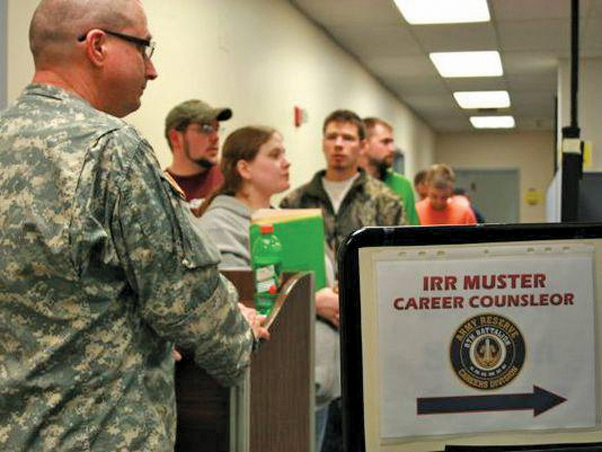While most military recruits sign up for active or Reserve component duty for three or four years, their enlistment contracts actually obligate them to a total service agreement of eight years.
Troops who choose to hang up their uniforms short of eight years of service transition into the Individual Ready Reserve for the remainder of that commitment and serve as an emergency backup “force of last resort.” The vast majority of IRR members are never called back to duty.
But all that could change if Reserve advocates gain traction on a new plan to significantly overhaul the way the IRR is managed, with a goal of making the historically disorganized component into a more integrated, reliable and useful part of the ‘total force’ in an era when the services are under pressure to reduce active-duty personnel strength and its associated high costs.
The Reserve Forces Policy Board, a federal advisory group, has suggested that a revamped IRR might seek to tap inactive veterans for a wider range of potentially short-term missions, creating a relationship similar to the private sector’s use of part-time consultants.
The board is calling for new laws and policies that would redefine the IRR and the role of more than 250,000 young veterans who do not drill regularly or receive pay but have prior military service and are committed to mobilize in the event of a crisis.
The push comes at a time when the military is shrinking, defense budgets remain tight and the Pentagon is looking for ways to modernize the all-volunteer force and tap new sources of talent.
The IRR is “a pool of pre-trained, high-quality manpower that the American military has invested a lot of money in — and they are just sitting there,” Arnold Punaro, chairman of the Reserve Forces Policy Board, said in an interview. “If we are looking at creating greater flexibility and maximizing the use of all talent, the IRR could play a very important role.”
Punaro and the RFPB recently sent Defense Secretary Ash Carter a letter urging large-scale changes to the IRR that could include:
•Improving official tracking of individual IRR troops and their skills by modernizing personnel data systems.
•Possibly changing the laws governing when and how IRR troops are mobilized.
•Attaching IRR troops to traditional Reserve units.
•Offering IRR troops access to some level of Tricare health coverage and retirement benefits.
•Allowing IRR troops to freeze their high-year-tenure clocks to incentivize the possibility of resuming a career with the active or Select Reserve components.
In most cases, the military is able to fill any gaps in its manpower needs through the traditional Reserve components, known as the Selected Reserve, in which part-time troops are assigned to units, drill regularly and are often dubbed “weekend warriors.”
But during severe personnel shortages, the IRR is tapped, too. During the peak years of the wars in Iraq and Afghanistan, about 30,000 soldiers and Marines from the IRR were mobilized for deployments. The most common occupational fields for which they were recalled were the combat arms, military police, vehicle operators, mechanics and engineers.
The Navy and Air Force also maintain IRRs, but have not mobilized large numbers of those personnel.
At the time of the Army and Marine Corps mobilizations, critics said the Pentagon was using the IRR as a “back-door draft” that disrupted the lives of veterans who were trying to assimilate into the civilian world and workforce and move on with their post-service lives. The Navy and Air Force maintain IRRs but have not mobilized large numbers.
Punaro said a first step toward revamping the IRR would be to simply figure out a better way to maintain basic contact with the extremely diffuse community of veterans with a remaining IRR commitment.
The Defense Department struggles to maintain an accurate database of IRR troops and their contact information because its personnel directorates use outdated database systems and do not share information with other government agencies such as the Internal Revenue Service. But now, new technology and social media tools should make that a manageable task.
A comprehensive, up-to-date and searchable database of IRR troops would allow the services to identify members with unique training, such as language skills, technical or cyber skills or advanced professional schooling, and tap them for short-term missions,” Punaro said.
“Think of it as temporary manpower. Businesses go out and use temp manpower pools all the time. We don’t really do that in the military that well,” he said.
Assigning IRR members to Reserve units would help integrate them into the operational force more efficiently and effectively. In 2012, the Army began assigning troops who were separating and shifting into the IRR to specific Reserve units. Those personnel are not required to drill or even maintain contact with their assigned units, but it gives those veterans a military point of contact if needed, Army officials said.
Tilghman’s article continues, touching on IRR troops having access to military benefits; being considered as “part-time active” force instead of strategic or operational; and using social media to keep them ready and informed. Read the full article at: http://www.airforcetimes.com/story/military/pentagon/2015/10/26/irr-review/74274560.



